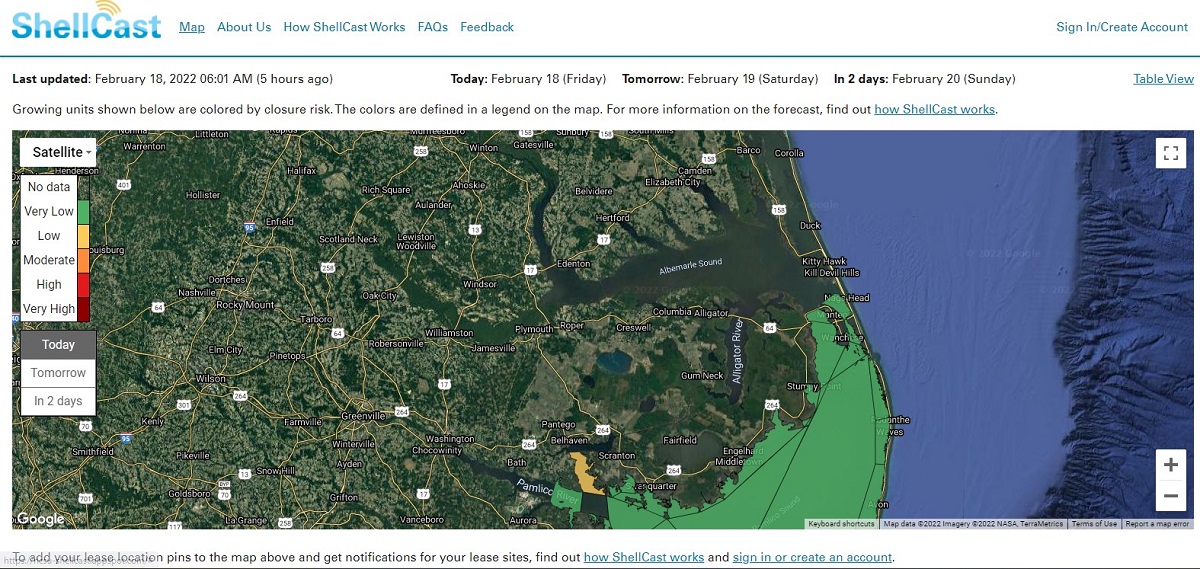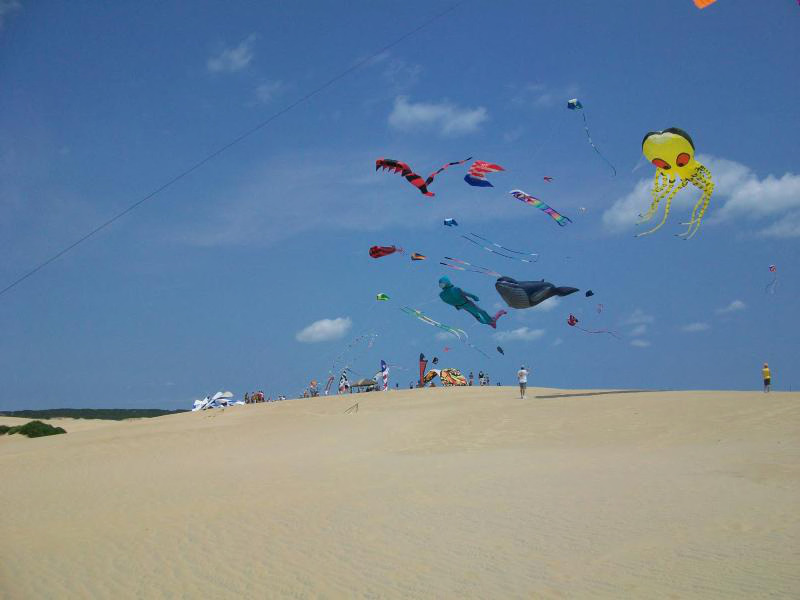Shellfish growers have access to a free online tool that will help them better predict when their lease will be closed temporarily after a rainstorm.
The North Carolina Division of Marine Fisheries issues temporary closures when stormwater pollutes coastal waters, which can contaminate shellfish. Contaminated shellfish can lead to illness when consumed.
Supporter Spotlight
The new online application, called ShellCast, gauges the risk — very low, low, moderate, high, very high — of a growing area temporarily closing on that day, the next day or two days later, but does not include official closures currently in effect. Information on closures is available on the Division of Marine Fisheries website or the Shellfish Sanitation Temporary Closure Public Viewer.
The project was funded by North Carolina Sea Grant, which announced the tool last week, as a core research project for its 2020-22 cycle,
“Temporary closures of shellfish harvest areas are a big challenge for many North Carolina shellfish growers and can have a big effect on inventory management, cash flow, and ultimately the bottom line,” said Eric Herbst, North Carolina Sea Grant’s coastal aquaculture specialist, in a news release.
North Carolina State University engineers and computer scientists developed the tool with the following key partners: Kathie Dello and John McGuire with the North Carolina State Climate Office; David Glenn with the National Weather Service Morehead City/Newport office; Andrew Haines of the Division of Marine Fisheries in Morehead City; A.K. Leigh with the National Oceanic and Atmospheric Administration’s National Centers for Coastal Ocean Science in Oxford, Maryland; Chris Matteo, North Carolina Shellfish Growers Association president and owner of Chadwick Creek Oyster Co.; and Ken Riley with the National Centers for Coastal Ocean Science, NOAA in Beaufort.
Once growers create a ShellCast account, they can add their lease sites and view those and nearby growing areas on the ShellCast map page. The forecast provides estimates on the risk that a lease site or growing area will be temporarily closed due to excess rainfall. It is beneficial to add leases because lease rainfall thresholds can vary and lead to different chances of closure even within the same growing area, according to the website. Growers can sign up to receive email or text message notifications if their shellfish lease sites are likely to be temporarily closed.
Supporter Spotlight
While growers are always instructed to yield to formal announcements and requirements for closure, ShellCast provides guidance to growers on how best to navigate potential closures.
“Knowing the likelihood of a closure occurring in the immediate future can help drive decisions regarding resource and time allocation to mitigate or manage the effects of a pending closure on their business,” Herbst said.
The ShellCast project started in 2020 under Natalie Nelson, who leads the Biosystem Analytics Lab at N.C. State. In addition to Sea Grant, the tool is supported by N.C. State’s biological and agricultural engineering department, and the Southeast Coastal Ocean Observing Regional Association. ShellCast was presented at the Coastal and Estuarine Research Federation Biennial Conference in November 2021.
Sheila Saia, member of the app’s web development team who is now associate director of the North Carolina State Climate Office, is to present updates and future directions for ShellCast at the North Carolina Aquaculture Development Conference March 12. Register for the conference at ncaquaculture.com.








